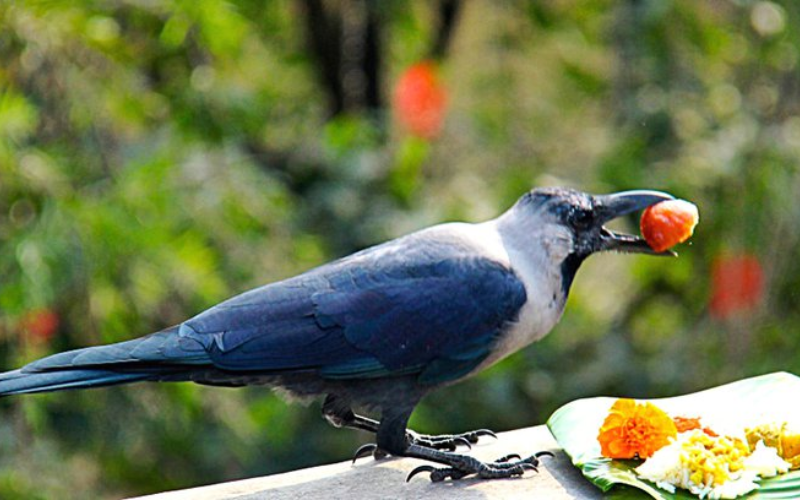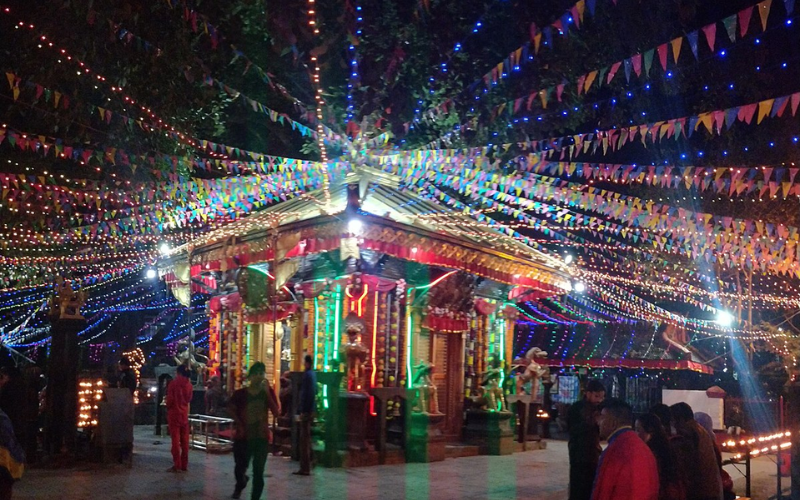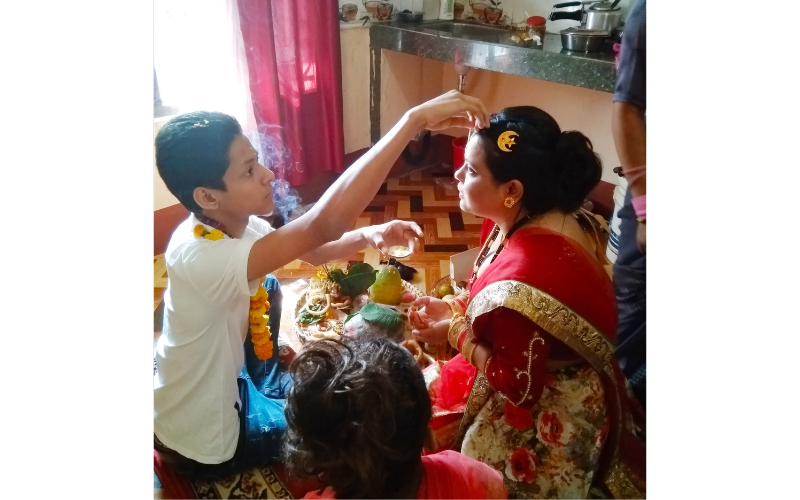Tihar, also known as Deepawali or Yamapanchak, is one of the most celebrated and cherished Hindu festivals in Nepal. Lasting for five days, it usually falls in October or November, depending on the lunar calendar (the month of Kartik). Often compared to India’s Diwali, Tihar carries its own unique customs and meanings that reflect Nepal’s deep spiritual connection with nature, animals, and family.
Day One: Kaag Tihar (Worship of Crows)
The festival begins with Kaag Tihar, a day devoted to the crow (Kaag), regarded as the messenger of Yama, the god of death. Early in the morning, people place food offerings—such as rice, grains, and sweets—on rooftops or roadsides for crows. This ritual is believed to ward off sorrow and misfortune in the coming year. It also symbolises respect for all living creatures, a core value in Hindu belief.

Day Two: Kukur Tihar (Worship of Dogs)
The second day is dedicated to dogs (Kukur), honoured for their loyalty and companionship. Dogs are also believed to serve as guardians of the afterlife and messengers of Yama. On this day, dogs—whether pets or strays—are adorned with garlands (mala), given a tika on their foreheads, and offered delicious meals. This celebration recognises the special bond between humans and dogs and acknowledges their faithful role in society.

Day Three: Gai Tihar and Laxmi Puja
The third day is considered the most important day of Tihar. In the morning, people worship the cow (Gai), a sacred animal symbolising wealth and purity. The cow represents Goddess Laxmi, the goddess of fortune and prosperity.
By evening, homes are thoroughly cleaned, decorated with oil lamps (diyo), candles, and colourful rangoli patterns at the doorways to welcome Goddess Laxmi. Families gather for Laxmi Puja, offering prayers, sweets, and gratitude for blessings received. Streets and houses glow with lights, and groups of children and young people visit homes singing traditional Deusi-Bhailo songs in exchange for gifts or money—a joyful display of community spirit.

Day Four: Govardhan Puja and Mha Puja
The fourth day is observed differently across communities. For many Hindus, it is Govardhan Puja, which commemorates Lord Krishna’s lifting of Mount Govardhan to protect villagers from torrential rains. Small mounds of cow dung, representing the mountain, are worshipped with prayers and offerings.
Among the Newar community, this day is celebrated as Mha Puja, meaning “worship of the self”. It is a unique ritual that emphasises self-respect, purity, and inner enlightenment. The Newars also celebrate this day as the New Year according to the Nepal Sambat calendar.
Day Five: Bhai Tika (Brother–Sister Day)
The final day of Tihar, Bhai Tika, is a celebration of the sacred bond between brothers and sisters. Sisters perform rituals by applying saptarangi tika—a seven-coloured tika—on their brothers’ foreheads, offering them garlands, sweets, and prayers for a long, prosperous life. In return, brothers present gifts and pledge to protect their sisters. This day symbolises love, protection, and family unity, marking a heart-warming end to the festival.

The Spirit of Tihar
Beyond the rituals, Tihar embodies the spirit of light, gratitude, and harmony. It honours not only gods and humans but also animals that share life’s journey with us. The glowing lamps symbolise the triumph of light over darkness, good over evil, and knowledge over ignorance.
Tihar is more than a festival—it is a reflection of Nepal’s rich cultural heritage, reminding people of the interconnectedness of all beings and the beauty of togetherness. As lamps illuminate homes and hearts alike, Tihar continues to bring joy, unity, and hope across the nation.
PC: Wikimedia Commons, Ravi Sharma
Also Read